Disney's Animal Kingdom
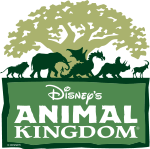  The Tree of Life is the icon of Disney's Animal Kingdom. | |
| Location | Walt Disney World Resort, Bay Lake, Florida, United States |
|---|---|
| Coordinates | 28°21′29″N 81°35′24″W / 28.358°N 81.59°WCoordinates: 28°21′29″N 81°35′24″W / 28.358°N 81.59°W |
| Theme | Natural environment and animal conservation |
| Owner | The Walt Disney Company |
| Operated by | Walt Disney Parks, Experiences and Consumer Products |
| Opened | April 22, 1998[1] |
| Operating season | Year-round |
| Website | Official website |
| Walt Disney World |
|---|
| Theme parks |
| Water parks |
| Other attractions |
| Hotels |
Disney's Animal Kingdom is a zoological theme park at the Walt Disney World Resort in Bay Lake, Florida, near Orlando. Owned and operated by The Walt Disney Company through its Parks, Experiences and Consumer Products division, it is the largest theme park in the world, covering 580 acres (230 ha).[2][3][4]:107[5] The park opened on Earth Day, April 22, 1998, and was the fourth theme park built at the resort. The park is dedicated and themed entirely around the natural environment and animal conservation, a philosophy once pioneered by Walt Disney himself.[6]
Disney's Animal Kingdom is distinguished from the rest of Walt Disney World's theme parks in that it features traditional attractions while also exhibiting hundreds of species of live animals. Due to these sensitive conditions, special designs and provisions were incorporated throughout the park to protect the animals' welfare. The park is located on the western edge of the resort, and is isolated from the resort's other theme parks and properties to minimize external disruptions to the animals; as a result, the park's nighttime show also features no fireworks that would otherwise disturb the animals. The park also uses biodegradable paper straws and prohibits plastic straws, lids and balloons. Disney's Animal Kingdom is accredited by the Association of Zoos and Aquariums and the World Association of Zoos and Aquariums, which indicates they have met or exceeded the standards in education, conservation, and research.[7]
In 2017, Disney's Animal Kingdom hosted about 12.5 million guests, ranking it as the third-most-visited theme park in North America and the sixth-most-visited theme park in the world.[8] The park's icon is the Tree of Life, a 145-foot-tall (44 m), 50-foot-wide (15 m) artificial baob tree.
Dedication
Welcome to a kingdom of animals... real, ancient and imagined: a kingdom ruled by lions, dinosaurs and dragons; a kingdom of balance, harmony and survival; a kingdom we enter to share in the wonder, gaze at the beauty, thrill at the drama, and learn.
History
Originally slated as Disney's "Wild Animal Kingdom," Disney announced plans for construction of the park in 1995 at an estimated cost of $600-$800 million dollars. To design the theme park, Disney Imagineers traveled to Africa and Asia to study the landscapes and wildlife.
Construction included building exhibits and animal holding areas, planting large numbers of plants, and creating dark rides and audio-animatronics.
Several animal rights groups voiced concerns when the park originally opened, citing Walt Disney World's previous missteps in handling animals at the now-defunct Discovery Island.[12]
Areas
Between the parking lot and the turnstiles sits a Rainforest Cafe.[13]
Disney's Animal Kingdom is divided into seven themed areas.
.jpg) Discovery Island
Discovery Island.jpg) Pandora – The World of Avatar
Pandora – The World of Avatar.jpg) Africa
Africa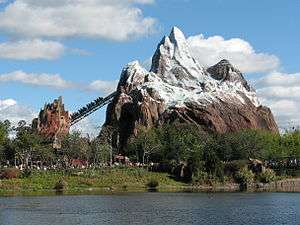 Asia
Asia.jpg) DinoLand U.S.A.
DinoLand U.S.A.
Oasis
The Oasis is the park's "main street" and provides the transition from the parking lot and world of man to the park and the world of animals. The main paths feature animals and dense vegetation and trees lead deeper into the park and then onto Discovery Island.
Discovery Island
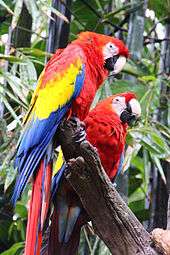
Discovery Island is located at the center of the park, in the middle of the Discovery River waterway. It is the "central hub" connecting the other sections of the park, with the exception of Rafiki's Planet Watch. It was originally called Safari Village, as Discovery Island was the name for the small zoological park located in Walt Disney World's Bay Lake, but renamed after that area closed in 1999.
The Tree of Life, the park's sculpted, man-made baobab tree, is located in this section and is surrounded by trails and animal enclosures. Inside the Tree of Life is It's Tough to Be a Bug!, a 3D film based on the 1998 Disney·Pixar film, A Bug's Life.
The park's largest gift shops and two of its major restaurants are on Discovery Island.[14]
Pandora – The World of Avatar
Pandora – The World of Avatar is themed to the fictional alien exoplanetary moon, Pandora, from James Cameron's Avatar series. The land's marquee attraction is Avatar Flight of Passage, a 3D augmented reality flight simulator that allows guests to fly on a banshee across the Pandoran landscape.[15] Another attraction, the Na'vi River Journey, places guests aboard a boat ride through Pandora's bioluminescent rainforests.[16][17] The area opened on May 27, 2017.[18][19]
Africa
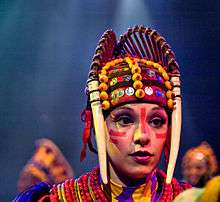
Africa is one of the original areas of the park. Set in the fictional east African port village of Harambe, this area contains several animal exhibits.[14] Some snippets from Africa that was duplicated by the Disney Imagineers are a fortress that was found in Zanzibar and a water-stained crumbling old building that was found in Kenya. Harambe includes a "hotel," restaurants, an outdoor bar that has live entertainment, and different marketplaces.
The village is the namesake of the Harambe Wildlife Preserve, the fictional home of Africa's main attraction, Kilimanjaro Safaris. Guests climb aboard an open-sided safari vehicle for an expedition to see African species in savanna, rivers and rocky hills. The safari features spotted hyenas, wild dogs, cattle, rhino, giraffes, lions, cheetahs, elephants, zebras, wildebeest, buffaloes, nile crocodiles, ostriches, several species of antelopes, birds, and flamingos.
On the adjacent Gorilla Falls Exploration Trail, visitors trek into the forest where animals such as black-and-white colobus monkeys, gerenuks, gorillas, hippos, Kenyan sand boas, kori bustards, meerkats, naked mole-rats, okapis, tarantulas, and yellow-backed duikers, as well as an aviary, are located.
On the western side of Africa is the Harambe Theater, which is home to the Festival of the Lion King, a stage attraction based on the 1994 Disney film The Lion King.
Rafiki's Planet Watch
Rafiki's Planet Watch is the only section of the park not connected to Discovery Island; it connects only to Africa. Guests board the 3 ft (914 mm) narrow gauge Wildlife Express Train for the short trip to and from the area, which consists of three sub-areas.
Guests first encounter Habitat Habit!, where they can see cotton-top tamarins and learn about the efforts to protect these endangered primates in their natural homes. Along the way, guests can also learn how to provide animal habitats in and around their own homes.
Conservation Station showcases the various conservation efforts supported by the Walt Disney Company. It also gives a behind-the-scenes glimpse into Disney's Animal Kingdom's animal care facilities, including a veterinary examination room complete with a two-way communications system so the veterinary staff can answer guest questions.
Outside, Affection Section is a petting zoo featuring goats, sheep, and other domesticated animals.
The area will close temporarily on October 21, 2018[20] and reopen in spring 2019.[21][22] The reason for the closure is unclear.[22][23]
Asia
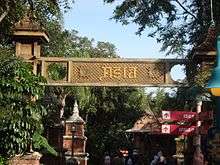
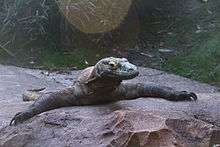
Asia, the first expansion area added to Disney's Animal Kingdom, first opened in 1999. This area is set in the fictional kingdom of Anandapur (which means "Place of many delights" in Sanskrit) which evokes the traits of Cambodia, India, Indonesia, Mongolia, Nepal, and Thailand. According to Disney history, Anandapur was established as a royal hunting preserve in 1544. Anandapur comprises two villages:
- A riverside village that is also called Anandapur.
- Serka Zong is in the foothills of the Himalayas. It's Asian for "Fortress of the Chasm."
Portraits of Anandapur's royal family (consisting of the maharaja and his wife) can be found in most of the businesses within the two villages, a map of the kingdom featuring both villages and their location relative to the mountains and river can be found on the wall of the Disney Vacation Club kiosk located there. Much like Harambe, Anandapur is now a center of animal research and tourism.
The visual focal point of Asia is Expedition Everest: Legend of the Forbidden Mountain, a steel roller coaster ride through the Forbidden Mountain of the Himalayas where passengers encounter a Yeti. Nearby is Kali River Rapids, a river rapids ride along the Chakranadi River through a rainforest, past an illegal logging operation and down a waterfall. The Maharajah Jungle Trek leads guests through the forests and ruins outside the village, which are home to species such as bantengs, bar-headed geese, Sumatran tigers, blackbucks, Eld's deer, gibbons, Large flying foxes, Komodo dragons and over 50 bird species.
Flights of Wonder, a live bird show where one of Anandapur's bird researchers educates a tour guide with a fear of birds about natural bird behaviors and the effects of habitat loss and conservation efforts on bird species, such as the black crowned crane and bald eagle.
In between Asia and DinoLand U.S.A. on the banks of the park's Discovery River is Rivers of Light, a nighttime show featuring mist screens, water fountains, floating lanterns, music, and lighting.[24][25]
DinoLand U.S.A.
DinoLand U.S.A. is themed around dinosaurs and other extinct prehistoric life. The area is anchored by the Dino Institute, a fictitious palaeontological facility which is home to Dinosaur, a dark thrill ride featuring a harrowing trip through time to the Late Cretaceous Time Period and it was based on the 2000 Disney film Dinosaur. Just outside the Institute is "Dino-Sue", a casting of a Tyrannosaurus Rex fossil that is the most complete yet found. At the nearby Boneyard, there is a multi-leveled playground area with a Columbian mammoth fossil to be uncovered and a cast skeleton of a Brachiosaurus. Adjacent to the Institute and its surrounding facilities, is Chester and Hester's Dino-Rama, which recalls the many roadside attractions that were once scattered throughout the United States. The area features Primeval Whirl, a steel Wild Mouse spinning roller coaster loosely inspired by the Dinosaur attraction, the TriceraTop Spin aerial carousel ride, carnival games and gift shops. At the eastern edge of DinoLand U.S.A. is the Theater in the Wild, which hosts Finding Nemo – The Musical, a live-action musical stage show based on the story of the 2003 Disney·Pixar film Finding Nemo.
Like the other sections of Disney's Animal Kingdom, there are animals on display. The animals, such as the American crocodile, red legged seriemas, Abdim's stork and Asian brown tortoise, have evolutionary links to the age of the dinosaurs. They are animal species that have survived since the dinosaur era and can be found along the Cretaceous Trail along with a collection of Mesozoic plants. The area was sponsored by McDonald's until 2009.[26]
Former and unbuilt areas
Camp Minnie-Mickey
Camp Minnie-Mickey was themed as a rustic summer camp, built as a placeholder on the location where Beastly Kingdom was intended to be built. It served as a meet-and-greet for Disney characters including Mickey Mouse, Minnie Mouse, Koda, and Thumper. The area's main attraction was the Festival of the Lion King, a live stage show featuring acrobatics and musical performances inspired by The Lion King. It currently plays in Africa's Harambe Theater. Pocahontas and Her Forest Friends, based on the 1995 animated film, was a live stage show that ran from April 22, 1998, to September 27, 2008. The area closed on January 5, 2014, and was replaced by Pandora – The World of Avatar.[27]
Beastly Kingdom
When conceived, Disney's Animal Kingdom was to focus on three broad classifications of animals: those that exist in today's reality; those that did exist but are now extinct (i.e., dinosaurs); and those that only exist in the realm of fantasy.[28] The original design for Animal Kingdom included a themed section called the Beastly Kingdom (possibly spelled as "Beastly Kingdomme"), devoted to creatures of legend and mythology. Camp Minnie-Mickey was built instead of Beastly Kingdom and was meant to serve as a temporary placeholder until Beastly Kingdom could be built.
Beastly Kingdom was to feature mythical animals such as unicorns, dragons, and sea monsters, featuring realms of both good and evil creatures:
- The evil side was to be dominated by Dragon Tower, a ruined castle home to a greedy fire-breathing dragon who hoarded a fabulous treasure in the tower chamber. The castle was also inhabited by bats who planned to rob the dragon of his riches. They were to enlist the guests' help in their scheme and whisk them off on a thrilling suspended roller coaster ride through the castle ruins. The climax of the ride was to be an encounter with the evil dragon himself, resulting in a nearly barbecued train of guests.[29]
- The good side was to be home to Quest of the Unicorn, an adventure that would send guests through a maze of medieval mythological creatures to seek the hidden grotto where the unicorn lives. Finally, the Fantasia Gardens attraction was to be a musical boat ride through animal scenes from Disney's animated classic Fantasia. The ride was to feature both the crocodiles and hippos from "Dance of the Hours" and the Pegasus, fauns, and centaurs from Beethoven's "Pastoral."[28][30]
In 2000, Walt Disney Imagineer Joe Rohde said: "We had a vision and now it's become a placeholder. We have all kinds of ideas and not all of them fit with the theme of Beastly Kingdom. I'm not even convinced there will be a Beastly Kingdom."[31]
Restaurants and shops
.jpg)
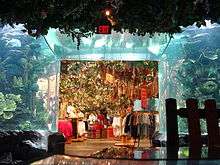
The park contains four table service restaurants:
- Rainforest Cafe, a themed restaurant chain operated by Landry's, located just outside the main entrance (also accessible from inside the park).
- Yak & Yeti, an Asian-themed restaurant located in the park's Asia section (operated by Landry's Restaurants) that opened on November 14, 2007.
- Tusker House, located in Africa and one of the park's original quick-service restaurants, was converted into a buffet restaurant and re-opened on November 17, 2007.
- Tiffins, located on Discovery Island, was opened on May 27, 2016 and features the themed Nomad Lounge adjacent to it.
Tusker House hosts "Donald's Safari Breakfast" and "Donald's Dining Safari Lunch," a character-dining event where guests enjoy a buffet while meeting Donald Duck and other Disney characters.
There are seven quick-service restaurants located throughout the park:
- Flame Tree Barbecue, on Discovery Island
- Pizzafari, on Discovery Island
- Satu'li Canteen, in Pandora – The World of Avatar
- Restaurantosaurus, in DinoLand USA
- Tamu Tamu Refreshments, in Africa
- Harambe Market, in Africa
- Yak & Yeti Local Foods Café, in Asia
As with other Walt Disney World theme parks, Disney's Animal Kingdom has other locations and carts that offer snacks and beverages.
Operations
The park typically closes earlier in the day than other parks in the Walt Disney World Resort; Animal Kingdom began to stay open through the evening on May 27, 2016.[32]
Disney does not allow plastic straws, lids, or balloons to be used in the park, unlike the rest of the Disney parks. This is so that plastic does not inadvertently enter an animal's habitat and hurt them. Instead, the park uses biodegradable paper straws and offers lids for hot drinks only.[33]
Unlike the three other theme parks at Walt Disney World, the restrooms at Disney's Animal Kingdom all have doors at their entrances. This practice is in place so that, in the unlikely event of an animal ever escaping, guests are able to keep themselves safe inside.[34]
Conservation efforts
As a zoological park, Disney's Animal Kingdom is engaged in research and conservation efforts involving its animal species. Since the park's opening in 1998, the resident elephant herd has produced seven calves, with births in 2003, 2004, 2005, 2008,[35] 2010,[36] 2011 and 2016. In 2008, the park's giraffe herd produced four newborns, raising the total number of giraffe births since opening to eleven.[37]
In 1999, one of the park's white rhinoceros gave birth to a female calf named Nande.[38] In 2006, Nande and Hasani, another of the park's rhinos, were transferred to Uganda's Ziwa animal sanctuary, in the first attempt to re-introduce white rhinos to the country. Due to civil strife, the white rhinoceros had become extinct in the area.[38] In June 2009, Nande gave birth to a male calf, the first such birth in Uganda in over 25 years.[38] By January 2010, eight white rhinos had been born at Animal Kingdom since the park's opening; the most recent was born to another Animal Kingdom-born mother.[39]
Controversy
Even in planning stages, various Florida-based animal rights groups and PETA did not like the idea of Disney creating a theme park where animals were held in captivity. The groups protested, and PETA tried to convince travel agents not to book trips to the park.[40] A few weeks before the park opened, a number of animals died due to accidents. The United States Department of Agriculture viewed most of the cases and found no violations of animal-welfare regulations.[41] On opening day, the Orange County Sheriff's office sent about 150 deputies; about two dozen protesters showed up. The protest lasted two hours, and there were no arrests.[42]
One year after the park opened, Animal Rights Foundation of Florida complained that a New Year's Eve fireworks show could upset the animals. A USDA inspector came to the park and found no problems with launching low-noise fireworks half a mile away.[43]
In January 2015, the animal rights group In Defense of Animals, listed the park at number 10 on its 2014 "list of worst zoos for elephants."[44]
Incidents
In October 2014, a snake dropped out of a tree and bit a boy, precipitating the death of his great-grandmother who suffered a cardiac arrest as a reaction to the attack. A lawsuit was threatened because of the incident but was never filed. The park confirmed that the snake that bit the boy was a non-venomous indigenous snake, and that it did not escape from an enclosure.[45]
Attendance
| 2008 | 2009 | 2010 | 2011 | 2012 | 2013 | 2014 | 2015 | 2016 | 2017 | Worldwide rank |
|---|---|---|---|---|---|---|---|---|---|---|
| 9,540,000[46] | 9,590,000[47] | 9,686,000[48] | 9,783,000[49] | 9,998,000 [50] | 10,198,000[51] | 10,402,000 [52] | 10,922,000[53] | 10,844,000 [54] | 12,500,000[55] | 6 |
See also
- Disney's Animal Kingdom attraction and entertainment history
- Rail transport in Walt Disney Parks and Resorts
- The Kingdom Keepers - The second book of this fiction series is set in the Animal Kingdom.
References
- ↑ "Disney's Animal Kingdom". wdwinfo.com. Werner Technologies, LLC. Retrieved November 8, 2011.
- ↑ Eades, Mark (August 30, 2017). "A former Disney Imagineer's guide to Disney's Animal Kingdom". OC Register. Retrieved September 4, 2017.
- ↑ Kurt Snibbe (June 11, 2016). "A close-up look at Shanghai Disneyland: the newest Disney Park". Orange County Register. Retrieved March 31, 2017.
- 1 2 Kowalczik, Christopher; Kowalczik, Carol (2008). Simply Disney: Vacation Planning Made Easy 2008. Lulu Publishing. ISBN 978-1-43571-0-054. Retrieved March 22, 2016.
- ↑ Robert Niles (May 26, 2013). "Disney's Animal Kingdom at Walt Disney World". Retrieved March 22, 2016.
- ↑ "Environmentality: Disney and the Environment". The Walt Disney Company. Retrieved October 25, 2008.
- ↑ "List of Accredited Zoos and Aquariums". aza.org. Association of Zoos and Aquariums. Retrieved September 5, 2010.
- ↑ "TEA/AECOM 2017 Global Attractions Attendance Report Report" (PDF). Themed Entertainment Association. 2017. Retrieved June 17, 2018.
- ↑ Finnie, Shaun (August 1, 2006). The Disneylands That Never Were. Lulu.com. p. 135. ISBN 978-1-84728-543-0. Retrieved 3 April 2016.
- ↑ Sandler, Corey (March 1, 2007). Walt Disney World Resort: Also Includes Seaworld and Central Florida. Globe Pequot. p. 203. ISBN 978-0-76274-169-4. Retrieved April 3, 2016.
- ↑ Rutherford, Stephanie (2011). Governing the Wild: Ecotours of Power. U of Minnesota Press. p. 48. ISBN 978-1-45293-281-1. Retrieved April 3, 2016.
- ↑ Mireya Navarro (April 16, 1998). "New Disney Kingdom Comes With Real-Life Obstacles". New York Times. Retrieved October 25, 2008.
- ↑ "Rainforest Cafe® at Disney's Animal Kingdom". Disney.go.com. Retrieved March 2, 2017.
- 1 2 The Imagineers (May 22, 2007). The Imagineering Field Guide to Disney's Animal Kingdom at Walt Disney World. Disney Editions. ISBN 978-1-4231-0320-2.
- ↑ Graser, Marc (December 10, 2014). "'Avatar' Ride Coming to Life at Disney's Animal Kingdom". Variety. Retrieved August 14, 2015.
- ↑ Martens, Todd (August 15, 2015). "Disney reveals plans for 'Toy Story Land' and 'Avatar' and more 'Star Wars'". Los Angeles Times. Retrieved August 16, 2015.
- ↑ Graser, Marc (February 26, 2015). "Disney 'Pushing Boundaries' with 'Avatar' Land at Animal Kingdom Theme Park". Variety. Retrieved August 14, 2015.
- ↑ Smith, Thomas (February 7, 2017). "Just Announced: Pandora – The World of Avatar Will Open May 27 at Disney's Animal Kingdom". Disney Parks Blog. Retrieved February 7, 2017.
- ↑ "Pandora – The World of Avatar to Open May 27, Star Wars Lands Coming in 2019 - The Walt Disney Company". The Walt Disney Company. February 7, 2017. Retrieved February 8, 2017.
- ↑ Bevil, Dewayne (September 25, 2018). "Disney: Rafiki's Planet Watch closing to the public next month". OrlandoSentinel.com. Retrieved September 25, 2018.
- ↑ Bevil, Dewayne. "Disney's Animal Kingdom: Rafiki's Planet Watch is reprieved". Orlando Sentiel.
- 1 2 "Rafiki's Planet Watch to reopen in Spring 2019 at Disney World's Animal Kingdom". USA TODAY. September 29, 2018. Retrieved October 2, 2018.
- ↑ Carter, Ashley (September 1, 2018). "Rafiki's Planet Watch at Disney's Animal Kingdom to return spring 2019". News 13. Retrieved October 2, 2018.
- ↑ Garcia, Jason; Dewayne Bevil (October 12, 2013). "Disney details "Avatar" land for Animal Kingdom". Orlando Sentinel. Retrieved October 12, 2013.
- ↑ Smith, Thomas. "Update on Nighttime Experiences at Disney's Animal Kingdom". Disney Parks Blog.
- ↑ Spence, Jack (May 4, 2009). "Dinoland U.S.A. - Disney's Animal Kingdom (The "World" According to Jack)". Land.allears.net. Retrieved April 20, 2013.
- ↑ "What's Next for Disney's Animal Kingdom". D23. Archived from the original on October 14, 2013. (Subscription required (help)).
- 1 2 "Disney Plans Wild Animal Kingdom in Florida". Associated Press. June 21, 1995. Retrieved October 25, 2008.
- ↑ "Dragon Tower". The Neverland Files. Archived from the original on July 21, 2013. Retrieved April 20, 2013.
- ↑ "Fantasia Gardens". The Neverland Files. Archived from the original on July 21, 2013. Retrieved April 20, 2013.
- ↑ Byrd, Alan (October 6, 2000). "Grand Prix out of gas; hotels to fuel land's future". Orlando Business Journal. Retrieved October 25, 2008.
- ↑ "Disney's Animal Kingdom Park at Night".
- ↑ "Disney says 'NO' to plastic straws for the animals". IS Foundation. Ian Somerhalder Foundation.
- ↑ "Top Ten Little Known Facts About Walt Disney World".
- ↑ Dewayne Bevil (July 1, 2008). "Baby elephant born at Disney's Animal Kingdom". Orlando Sentinel. Archived from the original on August 16, 2009. Retrieved July 14, 2009.
- ↑ Ogden, Jackie "New Baby Elephant, a Girl, Arrives at Disney’s Animal Kingdom", Disney Parks Blog, May 21, 2010. Retrieved August 27, 2010.
- ↑ Dewayne Bevil (October 10, 2008). "Disney's Animal Kingdom welcomes baby giraffe Bonsu". Orlando Sentinel. Archived from the original on August 16, 2009. Retrieved July 14, 2009.
- 1 2 3 Dewayne Bevil (July 13, 2009). "Landmark rhino has roots at Disney's Animal Kingdom". Orlando Sentinel. Archived from the original on July 24, 2009. Retrieved July 14, 2009.
- ↑ Thomas Smith (January 25, 2010). "Animal Kingdom Welcomes Endangered White Rhino To Herd". DisneyParks Blog. Retrieved January 25, 2010.
- ↑ Shenot, Christine (December 10, 1995). "The Captivity Question Disney's Proposed Park Makes an Attractive Target For Animal-Rights Groups". Orlando Sentinel. p. 9.
- ↑ "Death of Wildlife At New Disney Park Is a Worry to Experts --- Four Cheetah Cubs Succumb To a Chemical, and Cranes Are Killed by Tour Buses". New York, N.Y.: Wall Street Journal. April 7, 1998.
- ↑ Lancaster, Cory (April 24, 1998). "Protesters at Disney Had Sheriff on Guard Talk of A Major Animal-Rights Demonstration Brought Almost 150 Specially Trained Deputies to the Opening of Animal Kingdom". Orlando Sentinel. p. 9.
- ↑ Lancaster, Cory (January 18, 1999). "Tragedy at Disneyland Leads to Beefed-up Checks Here". Orlando Sentinel. p. 9.
- ↑ "Bronx Zoo, Disney's Animal Kingdom Make List Of The '10 Worst Zoos For Elephants'". The Huffington Post. January 13, 2015.
- ↑ "Disney's Animal Kingdom Faces Lawsuit After Escaped Snake Scares Woman To Death".
- ↑ "TEA/AECOM 2008 Global Attractions Report" (PDF). Themed Entertainment Association. 2008. Retrieved November 20, 2012.
- ↑ "TEA/AECOM 2009 Global Attractions Report" (PDF). Themed Entertainment Association. 2009. Archived from the original (PDF) on June 2, 2010. Retrieved November 20, 2012.
- ↑ "TEA/AECOM 2010 Global Attractions Report" (PDF). Themed Entertainment Association. 2010. Archived from the original (PDF) on July 19, 2011. Retrieved November 20, 2012.
- ↑ "TEA/AECOM 2011 Global Attractions Report" (PDF). Themed Entertainment Association. 2011. Archived from the original (PDF) on October 18, 2015. Retrieved November 20, 2012.
- ↑ "TEA/AECOM 2012 Global Attractions Report" (PDF). Themed Entertainment Association. 2012. Retrieved June 19, 2013.
- ↑ "TEA/AECOM 2013 Global Attractions Report" (PDF). Themed Entertainment Association. 2014. Archived from the original (PDF) on June 6, 2014. Retrieved June 6, 2014.
- ↑ Rubin, Judith; Au, Tsz Yin (Gigi); Chang, Beth; Cheu, Linda; Elsea, Daniel; LaClair, Kathleen; Lock, Jodie; Linford, Sarah; Miller, Erik; Nevin, Jennie; Papamichael, Margreet; Pincus, Jeff; Robinett, John; Sands, Brian; Selby, Will; Timmins, Matt; Ventura, Feliz; Yoshii, Chris. "TEA/AECOM 2014 Theme Index & Museum Index: The Global Attractions Attendance Report" (PDF). aecom.com. Themed Entertainment Association (TEA). Retrieved June 4, 2015.
- ↑ "TEA/AECOM 2015 Global Attractions Attendance Report Report" (PDF). Themed Entertainment Association. 2016. Retrieved June 3, 2016.
- ↑ Au, Tsz Yin (Gigi); Chang, Bet; Chen, Bryan; Cheu, Linda; Fischer, Lucia; Hoffman, Marina; Kondaurova, Olga; LaClair, Kathleen; Li, Shaojin; Linford, Sarah; Marling, George; Miller, Erik; Nevin, Jennie; Papamichael, Margreet; Robinett, John; Rubin, Judith; Sands, Brian; Selby, William; Timmins, Matt; Ventura, Feliz; Yoshii, Chris (June 1, 2017). "TEA/AECOM 2016 Theme Index & Museum Index: Global Attractions Attendance Report" (PDF). aecom.com. Themed Entertainment Association. Retrieved July 26, 2017.
- ↑ Au, Tsz Yin (Gigi); Chang, Bet; Chen, Bryan; Cheu, Linda; Fischer, Lucia; Hoffman, Marina; Kondaurova, Olga; LaClair, Kathleen; Li, Shaojin; Linford, Sarah; Marling, George; Miller, Erik; Nevin, Jennie; Papamichael, Margreet; Robinett, John; Rubin, Judith; Sands, Brian; Selby, William; Timmins, Matt; Ventura, Feliz; Yoshii, Chris (May 17, 2018). "TEA/AECOM 2017 Theme Index & Museum Index: Global Attractions Attendance Report" (PDF). teaconnect.org. Themed Entertainment Association. Retrieved May 17, 2018.